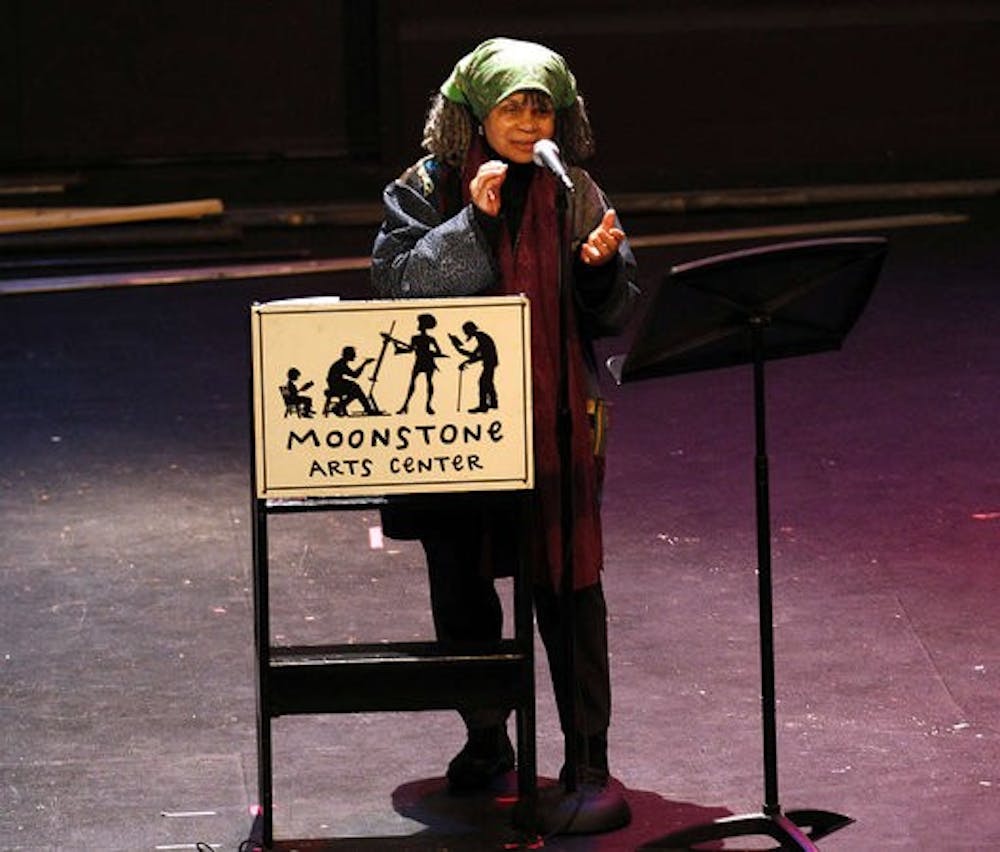A panel discussion on the past and present narratives surrounding the Black Arts Movement took place last Friday in Gilman.
Members of the community came to the event, titled “Archiving the Black Arts Movement and Beyond: A Conversation” and listened to each panelist present their unique perspective on the topics at hand.
The panel included Hopkins PhD candidate in English Gloria Jirsaraie, scholar Keith Gilyard, writer-professor Steve Cannon and poet-activist Sonia Sanchez. It was moderated by Bloomberg Distinguished Professor of English and History Lawrence Jackson.
The event began with a libation ceremony by Charlie Dugger, a local educator and community activist. He called out the names of black artists and political figures and encouraged the audience to do the same. Names from Ella Fitzgerald to Toussaint L’Ouverture soared through the room.
With the tone set by Dugger, the first speaker of the afternoon, Jirsaraie, elaborated on the history of black writers during the 1960s Black Arts Movement (BAM).
Her scholarly background in English was evident as she discussed the importance of publications such as Black Dialogue Magazine and the Journal of Black Poetry, both published in the 1960’s.
She also pointed out the black press organizations that existed during this time period, along with publications such as Negro Digest that featured the work of well-known poet Langston Hughes, as well as fellow panelist Sonia Sanchez.
Jirsaraie also discussed the BAM within the context of black communities and other black movements in the mid-20th century. In describing the participatory art forms, public readings and musical collaborations of BAM artists, Jirsaraie emphasized the community outreach involved in the movement.
She also addressed concepts of mysticism and a specific “black aesthetic,” which she claimed were controversial topics among black writers.
The final element in Jirsaraie’s discussion was the critique of the BAM by mainstream media outlets like The New York Times.
She argued that criticisms such as the idea that black artists were “overly emotional” ultimately shaped how the movement is remembered in the U.S.
Dugger followed Jisaraie and he gave a short speech about his time as an undergraduate student at Howard University and on engaging with his identity as a black American.
He described how he and his fellow students started holding an annual Marcus Garvey Day, a tradition that still occurs every year.
He also cited Langston Hughes as one of his favorite writers and a figure who encouraged him to live simply.
After Dugger, Keith Gilyard stepped up to the podium. His remarks focused on the need to archive the BAM through collections of often overlooked sources like student papers, unfinished manuscripts, audio recordings, organizational notes and community newspapers.
Gilyard stressed the need to compile these sources in order to flesh out the cultural context of the time period.
Another point he made was that the BAM was a literacy movement as well as a literary one. According to Gilyard, the increase in production and dissemination of black writing caused an increased interest in reading among young people of color.
The next speaker was Steve Cannon, a writer and professor who spoke about his own personal experiences with his fellow artists during the BAM. Cannon began his story with his mother’s immigration from Haiti after the Haitian Revolution and his own upbringing in New Orleans before he moved to New York City.
He described the breadth of education he received from the works of black writers growing up. While the tone of the issues he discussed was serious, Cannon also brought bits of lightness and laughter to the audience.
The final speaker on the panel was Sonia Sanchez, a poet and activist who was also a part of the Black Arts Movement. Sanchez first discussed the origins of the BAM. Scholar Larry Neal coined the term in the early 1960s as a “sister” to the Black Power concept.
Next Sanchez recited the poem she read at the funeral of legendary drummer, educator and BAM activist Max Roach. Her words and scatting were strong and delicate, with powerful imagery of a man who changed many people’s lives with his music.
“Whenever I hear a drum exploding in a room / I remember the first time I saw you on stage / your drum crashing against the stars.”
The poem also played with concepts of gender and divinity.
“Amen! Awomen! Amen-men-men-men! Awomen! Awomen! Awomen! Awomen! Awomen!”
Sanchez later discussed gender dynamics within the BAM, as she was often the only woman reading poetry alongside a group of all men.
Like Jirsaraie, Sanchez also commented on the ways in which she believes that the narrative of the BAM has been distorted and made to seem insignificant in the public conscious.
To counter this prevailing notion, she spoke about modern day black artists like Toni Morrison, Danny Glover and Spike Lee, whose works have been shaped and inspired by that of the BAM artists.
The event concluded with a series of questions from the audience. Sanchez responded with a declaration of the need for future generations to question established institutions the way that her generation of artists in the BAM did.
She also stressed that audience members support current writers and artists who are promoting progressive politics.





